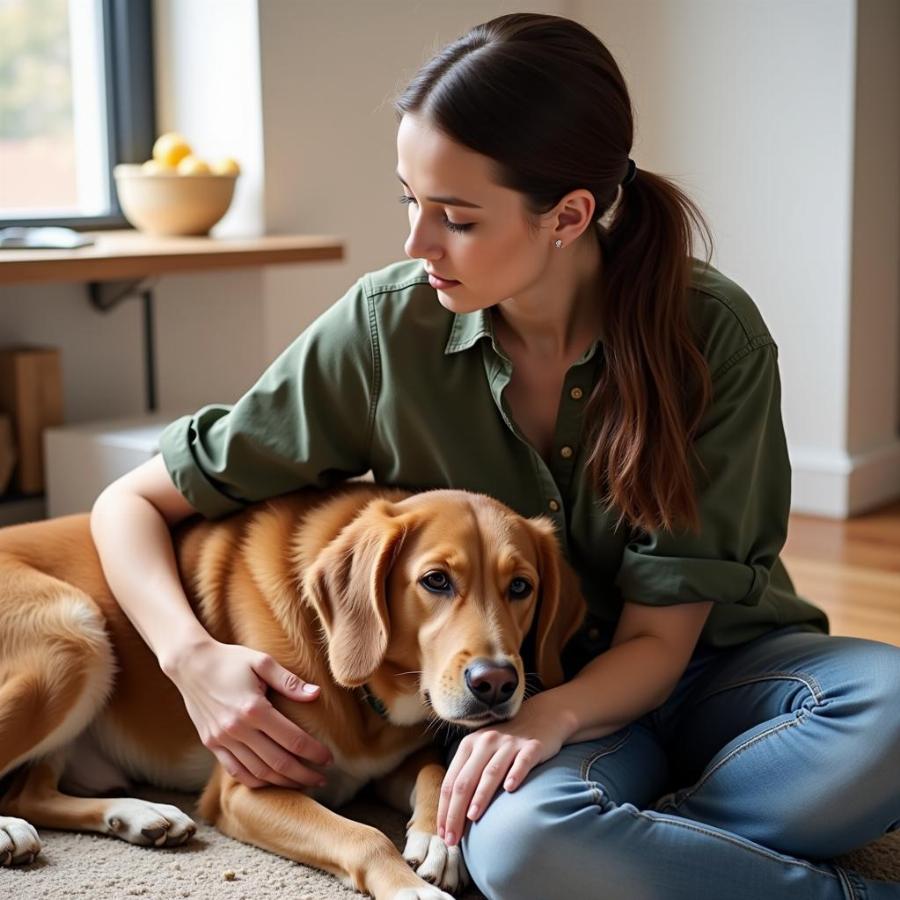For many of us, fireworks are a dazzling display of celebration. But for our canine companions, those sudden booms and bright flashes can be a source of intense fear and anxiety. Understanding what sounds scary for dogs and why is the first step in helping them cope.
Why Are Some Sounds Scary for Dogs?
Dogs experience the world with significantly more sensitive hearing than humans. What might sound like a mild pop to us can be a deafening explosion to our furry friends. This sensitivity, combined with a dog’s natural instinct to be wary of potential threats, can make certain sounds particularly frightening.
Common Sounds Scary for Dogs:
While fireworks are a well-known trigger, many other everyday noises can be terrifying for dogs. These include:
- Thunderstorms: The low rumble of thunder, the crack of lightning, and even changes in barometric pressure can be unsettling for dogs.
- City Noises: Traffic, sirens, construction, and even loud conversations can be overwhelming, especially for dogs not accustomed to urban environments.
- Household Appliances: The vacuum cleaner, blender, hairdryer, and even the doorbell can startle dogs, especially those with noise sensitivity.
Recognizing the Signs of Fear in Dogs:
It’s crucial to recognize the signs of fear and anxiety in dogs so we can provide comfort and support. Some common indicators include:
- Whining and Barking: Dogs may vocalize their fear through excessive barking or whining.
- Trembling and Shaking: Physical manifestations of fear often include trembling or shaking.
- Hiding: Dogs may seek refuge under furniture, in closets, or behind objects.
- Pacing and Restlessness: An inability to settle down and constant pacing can signal anxiety.
Helping Your Dog Cope with Scary Sounds:
There are numerous ways to help your dog feel safe and secure when those scary sounds strike:
- Create a Safe Space: Designate a den-like area where your dog can retreat. This could be a crate, a bed in a quiet room, or even a spot under a table draped with blankets.
- Desensitization and Counter-Conditioning: Gradually introduce your dog to recorded versions of the frightening sounds at a very low volume, pairing the sound with positive reinforcement like treats and praise.
- Distraction Techniques: When you know a scary sound is likely, engage your dog in a favorite game, offer a chew toy, or practice obedience commands.
- Consult a Veterinarian or Certified Behaviorist: If your dog’s fear is severe, seek professional guidance. They can offer tailored advice and may recommend medications to help manage anxiety.
Providing Comfort and Understanding:
Remember, never punish your dog for being scared. Their fear is real and punishing them will only worsen their anxiety. Instead, offer comfort, reassurance, and a safe space.
 Owner comforting their scared dog
Owner comforting their scared dog
Looking for more insights into canine behavior? Check out our articles on most feared dogs and scary looking dogs. We also have information on specific noises that can be triggering for dogs, like noises that make dogs go crazy and what constitutes a big scary dog from a dog’s perspective. Learn about different scary dogs breeds and how to best interact with them.
About Beaut Dogs:
Beaut Dogs is your go-to resource for all things dog-related. We provide reliable, informative, and in-depth knowledge about the world of canines. From breed information and care tips to expert advice and product recommendations, we’re here to help you navigate the joys and responsibilities of dog ownership. For personalized support and answers to your specific questions, feel free to reach out to us at [email protected]. Let Beaut Dogs be your guide to a happy and fulfilling life with your furry best friend!